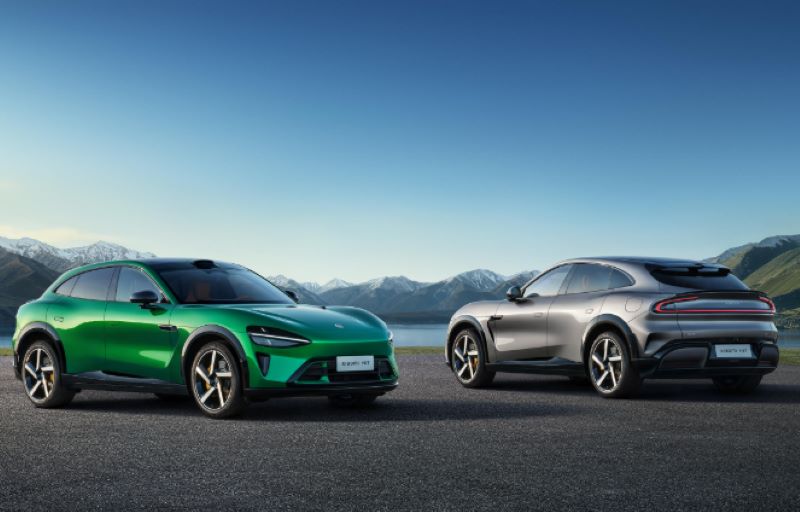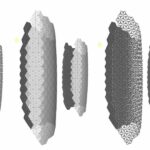On June 16, during the “Vibrant China Research Tour” event, Lei Jun, the founder of Xiaomi Group, revealed an exciting piece of news: the production capacity at Xiaomi’s automotive factory has now reached 20,000 to 30,000 vehicles per month. This achievement is no accident; behind it lies Xiaomi’s deep involvement in intelligent manufacturing in the automotive sector.
Leap in Production Capacity: What’s Behind the 20,000 to 30,000 Monthly Output
Xiaomi’s automotive factory has achieved a high level of automation, with over 700 robots operating in various production stages. Key processes, such as die-casting, have achieved 100% automation, and the rate of CNC (Computer Numerical Control) for over 200 critical processes has also reached 100%. A new Xiaomi SU7 is rolled off the production line every 76 seconds. This level of automation not only boosts production efficiency but also ensures stable product quality.
Lei Jun acknowledged that Xiaomi’s success in car manufacturing owes a lot to Beijing’s favorable industrial environment. Beijing’s strong industrial chain foundation provides Xiaomi with comprehensive support, from parts supply to technical assistance. The city government’s policy support, such as the release of the “Beijing New Energy Vehicle High-Quality Development Implementation Plan (2023-2025)” and the issuance of the “Beijing Autonomous Driving Vehicle Regulations,” has helped Xiaomi address many challenges in industrial innovation. From Xiaomi’s initial announcement in 2021 to build cars to the efficient operation of its automotive factory today, Beijing’s speed has greatly assisted Xiaomi’s rapid rise.
In addition, Xiaomi has demonstrated forward-thinking in its production capacity planning. By establishing long-term strategic partnerships with several core suppliers, the company has secured a stable supply of key components, effectively avoiding production stoppages caused by supply chain fluctuations. The factory also adopts a flexible production model, allowing it to adjust production plans in response to market demand and quickly respond to changes in orders for different car models, further improving capacity utilization.
New Product Launch: YU7, Xiaomi’s New Star
Apart from breakthroughs in production capacity, Xiaomi’s automotive division is also making moves in product strategy. Lei Jun announced that the Xiaomi YU7 will be unveiled at the end of this month and will officially launch in July. Since its announcement, the car has garnered considerable attention, with user registration reaching three times that of the Xiaomi SU7, signaling high market expectations.
The Xiaomi YU7, Xiaomi’s first SUV model, is positioned as a luxury high-performance SUV. Built on an 800-volt silicon carbide high-voltage platform, it is nearly 5 meters long with a wheelbase of 3 meters, offering a spacious and comfortable interior. Its performance is remarkable, with the Max version dual-motor all-wheel-drive model producing a peak power of 691 horsepower, accelerating from 0 to 100 km/h in just 3.23 seconds, and reaching a top speed of 253 km/h. The standard single-motor rear-wheel-drive version has a maximum range of 835 km, and it can recharge 620 km of range in just 15 minutes, addressing users’ range anxiety. In terms of intelligent driving, all versions are equipped with lidar and the Nvidia Thor chip, providing 700 TOPS of computing power for a smarter and safer driving experience.
From an exterior design perspective, the Xiaomi YU7 follows the family design language. Its signature “Mi” shaped LED headlights, combined with a closed front grille, give it a distinctive look. The body side features elegant and smooth lines, with 20-inch five-spoke wheels and yellow Brembo brake calipers emphasizing its sporty nature. The rear end features a dual-stage roof spoiler and a small tail wing at the back of the trunk, which not only enhances the vehicle’s aerodynamics but also adds a dynamic and fashionable touch to the overall design.
It is also worth noting that Xiaomi has paid great attention to detail in the interior design of the YU7. The seats are ergonomically designed and offer multiple adjustment modes to cater to users of different body types. The car is equipped with a large panoramic sunroof, providing a more open view and ample natural light for the passengers. Additionally, the interior offers plenty of storage space, making it easy to store various items for both daily trips and long-distance travel.
Market Outlook: Challenges and Opportunities

With the success of the SU7 in the market, Xiaomi has already made impressive strides. In the first half of 2025, its sales surpassed 144,000 vehicles, and in April, it even surpassed the Tesla Model 3 by selling 28,500 units, topping the 100,000+ price segment. Now, with increased production capacity and the impending launch of the YU7, Xiaomi’s automotive division is poised to make waves in the market.
On the technology front, Xiaomi continues to invest in research and development. For example, the Xiaomi SU7 Ultra features a dual V8s+V6s tri-motor system, accelerating from 0 to 100 km/h in just 1.98 seconds, with a range of 800 kilometers. The 800V high-voltage platform allows for 220 kilometers of range to be added in just 5 minutes of charging. The Xiaomi Pilot system for intelligent driving adopts BEV+Transformer algorithms to support full-scenario assisted driving. In the C-NCAP collision tests, the SU7 received a full “G+” rating, with its “armored cage” body structure and 2000MPa hot-formed steel creating a “mobile safety fortress,” enhancing its appeal to safety-conscious consumers.
Thanks to the HyperOS system, Xiaomi’s vehicles realize “full connectivity between humans, cars, and homes.” Voice control in the car can manage Xiaomi home devices like air conditioning and curtains, AR navigation syncs with the smartphone in real time, and after parking, the car automatically switches to home security mode. The charging network is also interconnected with brands like NIO and XPeng, allowing users to access 1.02 million charging piles across the country with just one tap, addressing charging anxiety and offering a unique ecosystem advantage.
Xiaomi has also been enhancing its user service system. Through a combination of online and offline service modes, the company provides a convenient car-buying and ownership experience. Online, users can check vehicle status, schedule maintenance, and find charging stations via the official app. Offline, Xiaomi is expanding its service network across major cities to ensure timely responses and resolutions for any issues. Xiaomi has also launched value-added services like roadside assistance and extended vehicle warranties to boost customer satisfaction and loyalty.
However, market competition remains fierce. Tesla frequently reduces prices, and traditional automakers are continuously releasing new models. Xiaomi’s factory needs to maintain stable production capacity and ensure a consistent supply of products. After the YU7 is launched, its actual performance, including quality, range, and safety, will be rigorously tested by the market. Xiaomi’s model of outsourcing battery and autonomous driving technology to partners like CATL while focusing on integration will need to prove itself in the long term. But with its technological breakthroughs, ecosystem collaboration, and cost-effective offerings, Xiaomi has already established a strong position in the electric vehicle market, and its future looks promising.
Cross-Industry Marketing: Breaking Boundaries to Expand Market Influence
In terms of marketing, Xiaomi actively explores cross-industry collaboration models. It has partnered with well-known tech brands to launch co-branded products, deeply integrating automobiles with electronics. By leveraging both brands’ influence, Xiaomi aims to attract more attention from younger consumers. For example, by collaborating with Xiaomi smartphones, the company has launched a vehicle-integrated suite that allows users to seamlessly switch between their phones and cars for a unified smart experience. Additionally, Xiaomi cars participate in various cultural and sports events, sponsoring popular competitions and hosting themed exhibitions to increase brand exposure and reputation, further expanding its market reach.
Future Plans: Striving Toward Higher Goals
Looking ahead, Xiaomi has a clear development plan. In terms of production capacity, the company plans to further expand its manufacturing scale by building new factories and introducing more advanced production equipment and technologies, aiming to increase monthly output to meet the growing market demand. In terms of product lineup, in addition to sedans and SUVs, Xiaomi plans to enter more market segments with the release of MPVs, pickup trucks, and other models to complete its product matrix. The company will also continue to invest in new energy and intelligent driving technologies, exploring solid-state batteries, hydrogen energy, and other innovations to provide users with more environmentally friendly, intelligent, and safe travel solutions. Xiaomi is steadily working toward its goal of becoming a global leader in smart electric vehicle manufacturing.












